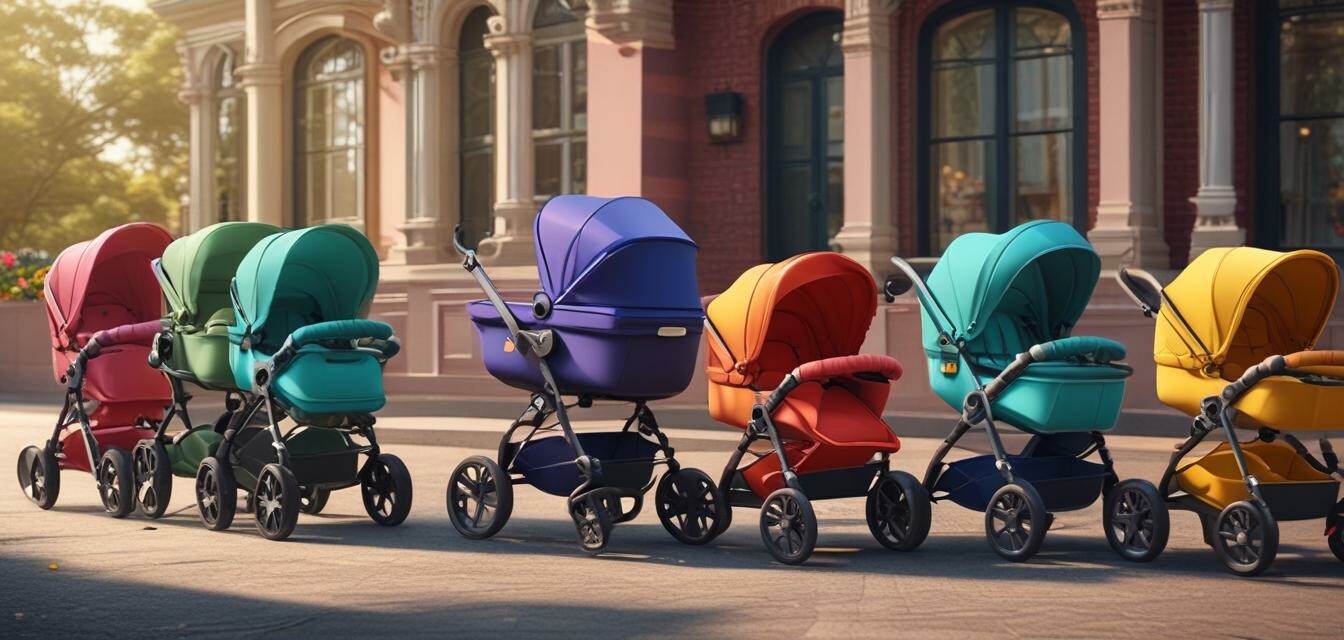
Choosing the Best Stroller for Your Baby's Age
Key Takeaways
- Consider your baby's age for appropriate stroller selection.
- Look for safety features including harness systems and brakes.
- Prioritize comfort with proper padding and support.
- Convenience features like folding mechanisms can make outings easier.
- Research various types of strollers: convertible, jogging, and more.
When it comes to selecting the right stroller for your little one, it's essential to factor in their developmental stage. With so many options available, how do you determine which stroller fits your baby best? In this guide, we will break down the various stroller types suitable for different age groups and highlight critical features that prioritize safety and convenience.
Understanding stroller types and their suitability
1. Infants (0-6 months)
Newborns require strollers that provide proper support and comfort. For this age group, parents often opt for:
- Travel systems: These combine an infant car seat with a stroller, allowing for easy transition from car to stroller.
- Full-sized strollers: These provide ample cushioning and reclining seats for sleeping infants.
2. Young toddlers (6-12 months)
As babies start to sit up, they need strollers that offer a bit more versatility:
- Convertible strollers: These can change from a bassinet to a stroller seat, catering to your child's growth.
- Lightweight strollers: For parents on the go, lightweight strollers offer easy handling and portability.
3. Toddlers (1-3 years)
For toddlers who are more active and curious, consider strollers that provide both safety and convenience:
- Jogging strollers: Ideal for the active parent, jogging strollers provide extra stability for quick movements.
- Umbrella strollers: These are compact and lightweight, perfect for quick trips.
4. Preschoolers (3+ years)
As children grow, the stroller needs change once more. Options for preschool-aged children include:
- Convertible strollers: These can adapt to hold larger children and help transition them out of a stroller when ready.
- High-back booster seats: Assure safety as they start to sit unrestrained.
Must-have features for every age group
No matter which age group your child falls into, certain features are essential for all strollers:
| Feature | Description |
|---|---|
| Safety Harness | A sturdy harness system to keep your baby secure. |
| Brakes | Reliable braking systems to prevent rolling away. |
| Reclining Seats | Adjustable seats for sleeping or sitting babies. |
| Storage Baskets | For storing baby essentials, shopping, or personal items. |
| Cup Holders | Convenient for parents to store drinks or snacks. |
Choosing the best stroller for your lifestyle
Your lifestyle plays a significant role in determining the best stroller for your baby. Consider factors like your typical outings, how often you travel, and where you live. Do you need a stroller that folds easily for public transport? Or do you require a stroller that can handle rugged terrain? Presenting a table to help you assess stroller types based on lifestyle preferences:
| Stroller Type | Best For | Pros | Cons |
|---|---|---|---|
| Travel System | Newborns | All-in-one convenience | Bulkier to carry |
| Convertible Stroller | Growth stages | Adjustable, long-lasting | Pricey |
| Jogging Stroller | Active parents | Stability, suspension | Heavy |
| Lightweight Stroller | Travel | Portability | Lacking features |
| Umbrella Stroller | Short outings | Compact design | Limited comfort |
Key considerations before making a final decision
Here are some tips to keep in mind while evaluating strollers:
Tips for selecting the right stroller
- A test drive: Try pushing the stroller around to see how it feels.
- Safety checks: Ensure it meets safety standards.
- Read reviews: Insights from other parents can be invaluable.
- Warranty Options: Look for products that offer good warranties.
- Future use: Consider how long you plan to use the stroller.
Frequently asked questions
- When should I stop using a stroller? Most children outgrow strollers by ages 3-4.
- Can I use a jogging stroller for everyday use? Yes, but check if it's appropriate for all terrains.
- What's the average weight limit for strollers? Weight limits vary, so check specifications.
Conclusion
Choosing the right stroller is vital for your baby’s comfort and safety. By considering your baby’s age, your lifestyle, and essential features, you can find the perfect stroller that meets your family's needs. For more information on different stroller types, visit our [Buying Guides](https://www.babypramsstrollers.com/blog/buying-guides) section.